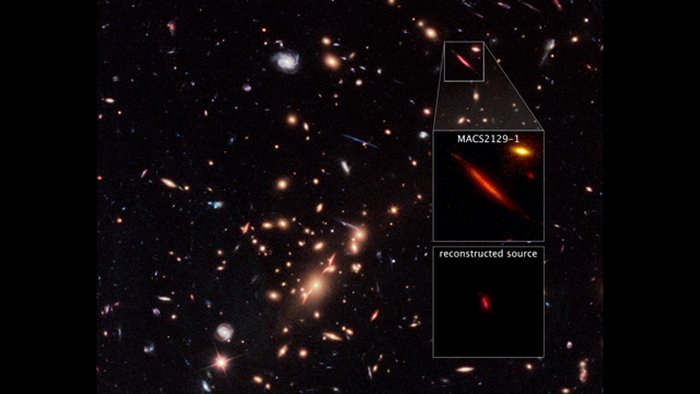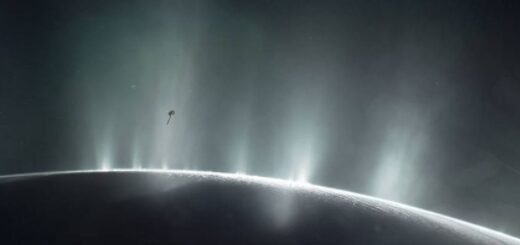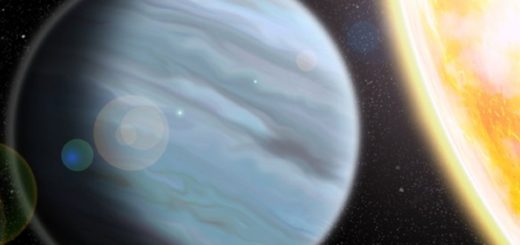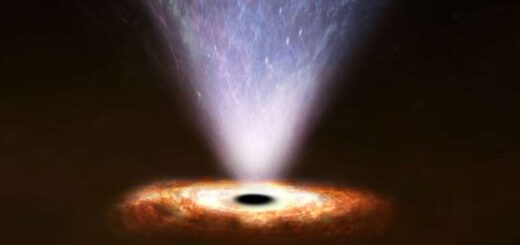Strange Case Of A Dead Galaxy – What Happened To All The Stars?
A massive,” dead” galaxy puzzles astronomer who now wonder what happened to all the stars. The case of galaxy MACS 2129-1 is interesting because it challenges our theories of galaxy evolution.
Located about 10 billion light-years away from Earth, MACS 2129-1 is only half the Milky Way’s size, but it’s three times as massive as our home galaxy.

It is the first example of a compact yet massive, fast-spinning, disk-shaped galaxy that stopped making stars only a few billion years after the Big Bang. Using the Hubble Space Telescope, astronomers have managed to catch a glimpse of this unusual object and they expected to see a chaotic ball of stars formed through galaxies merging together. Instead, they saw evidence that the stars were born in a pancake-shaped disk.
The galaxy, called MACS 2129-1, is considered “dead” because it is no longer making stars. This unusual galaxy surprised astronomers because elliptical galaxies contain older stars, while spiral galaxies typically contain younger blue stars. At least some of these early “dead” disk galaxies must have gone through major makeovers. They not only changed their structure, but also the motions of their stars to make a shape of an elliptical galaxy.
This new insight is forcing astronomers to rethink their theories of how galaxies burn out early on and evolve into local elliptical-shaped galaxies. “Perhaps we have been blind to the fact that early ‘dead’ galaxies could in fact be disks, simply because we haven’t been able to resolve them,” said study leader Sune Toft of the Dark Cosmology Center at the Niels Bohr Institute, University of Copenhagen.
Why this galaxy stopped forming stars is still unknown. It may be the result of an active galactic nucleus, where energy is gushing from a supermassive black hole. This energy inhibits star formation by heating the gas or expelling it from the galaxy. Or it may be the result of the cold gas streaming onto the galaxy being rapidly compressed and heated up, preventing it from cooling down into star-forming clouds in the galaxy’s center.
But how do these young, massive, compact disks evolve into the elliptical galaxies we see in the present-day universe? “Probably through mergers,” Toft said. “If these galaxies grow through merging with minor companions, and these minor companions come in large numbers and from all sorts of different angles onto the galaxy, this would eventually randomize the orbits of stars in the galaxies. You could also imagine major mergers. This would definitely also destroy the ordered motion of the stars.”



 Creators of mankind
Creators of mankind Description of “Tall white aliens”
Description of “Tall white aliens” Where they came from?
Where they came from? About hostile civilizations
About hostile civilizations The war for the Earth
The war for the Earth “Tall white aliens” about eternal life
“Tall white aliens” about eternal life Video: “Nordic aliens”
Video: “Nordic aliens” Aliens
Aliens Alien encounters
Alien encounters The aliens base
The aliens base UFO
UFO Technology UFO
Technology UFO Underground civilization
Underground civilization Ancient alien artifacts
Ancient alien artifacts Military and UFO
Military and UFO Mysteries and hypotheses
Mysteries and hypotheses Scientific facts
Scientific facts


















